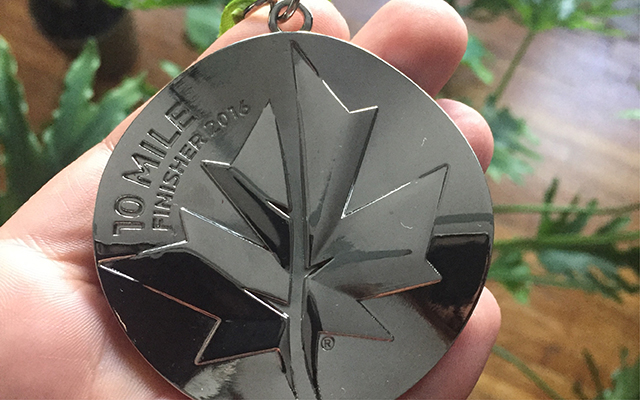Last month, I wrote about my intuitive running experiment, in which I “trained” for a long (for me)-distance race without a formal training plan. To summarize, I prepared for the Medtronic Twin Cities 10 Mile by using the concept of biofeedback to determine when, how far, and how often I would run.
I checked in with my body and mind daily to assess soreness, tightness, energy, mood, and general interest. I used range-of-motion testing and HRV scores to inform my subjective markers.
During runs, I’d do mental body scans — checking in with each body part, as one might while meditating — and shift my pace and route depending on what my body seemed to like best. Some days, that meant short, speedy runs; on others, I’d double or triple my planned loops.
The primary result was that I loved the race prep. This approach to training rekindled my love of running, which had been one of the first activities I embraced when I began my fitness journey many moons ago. My runs felt good, even when they were hard, and I was having fun! But, I didn’t know how that would translate on Race Day, Sunday, Oct. 9.
Leading up to the event, many people asked if I had a goal in mind (I didn’t) or if I was hoping to hit a PR (I wasn’t).
But all the questioning got me wondering: How long might this reasonably take me? My best friend was planning to meet me at various points along the course, and at the finish. She would probably appreciate an ETA.
I worked out that my longest run amounted to about six miles at a steady “jog three miles-walk five minutes” pace two weeks before the race. If I could run no more than that — meaning if I ran the first six miles and had to walk the last four — I would still finish in about 2:30.
On the morning of Oct. 9, as I stood near the back of the pack, shivering as I waited to begin, I had 2:30 in mind. The announcer called “Start” as the sun was barely beginning to glow over the Minneapolis skyline, and I began to run. In the first half-mile I let the crowd pass me. I lost sight of the pacer holding the two-hour finish (12:00 min/mile) flag.
I ran from downtown Minneapolis, along the river and over into St. Paul. I walked through every water station and surprised myself when I felt compelled to start running again after only a few seconds. I was moving faster than I had anticipated and nearly stopped myself to walk for the sake of resting.
But, if my training had taught me nothing else, it was how to listen to my body while running. I heeded those cues and kept moving, smiling the entire way.
When I crossed the finish, I burst out laughing and texted my BFF to tell her I was done — a solid half-hour ahead of schedule.
We found each other, got coffee and brunch, and then I went home to take a nap. It was a perfect day and exactly what I’d originally hoped it would be: “I’d love to cross the finish line smiling and then go about my day without missing a beat,” I wrote in September. Accomplishing that goal felt better than any race time could have, and it has me wondering what my next experiment will be.

This Post Has 0 Comments